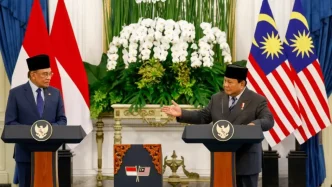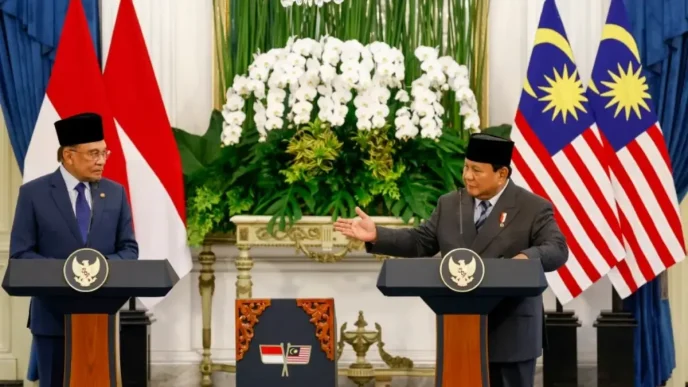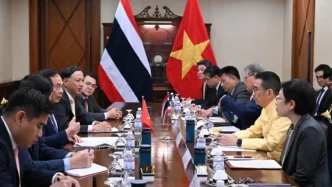In a growing clash over healthcare policy, Malaysian doctors are pushing back against new government regulations aimed at controlling medicine prices, arguing that the rules threaten the quality of care. The controversy, unfolding in Kuala Lumpur, comes at a time when Malaysia is also navigating delicate diplomatic efforts with neighboring countries, including border disputes with Indonesia and peace initiatives with Thailand and Cambodia under the ASEAN framework. This intersection of domestic policy and regional dynamics highlights the complex challenges facing the nation.
While the doctors’ objections have struck a chord in parts of the medical community, critics argue that the argument may be dressed up to protect financial interests—both their own and those of the pharmaceutical industry. Concerns about drug shortages and dwindling quality of care, though not unfounded, could be overstated to protect private interests—particularly those of pharmaceutical firms and well-resourced urban clinics. The emphasis on “high-quality” medicines, for instance, often overlooks the viability of generics or state-backed subsidies. As with many policy flashpoints, what appears to be a technical dispute over regulation may also reflect deeper tensions over who controls access—and profit—in Malaysia’s evolving healthcare landscape.
Healthcare Policy Under Fire
The Malaysian government recently introduced a set of regulations designed to cap the prices of essential medicines, a move intended to make healthcare more accessible to the general population. While the policy has been welcomed by consumer advocacy groups, it has sparked fierce opposition from medical professionals. Doctors, represented by associations such as the Malaysian Medical Association (MMA), argue that the price caps could lead to reduced availability of high-quality drugs, as pharmaceutical companies may opt to limit supply or withdraw from the market altogether.
The debate centers on the balance between affordability and sustainability. Many doctors warn that the regulations, while well-intentioned, fail to account for the operational costs of hospitals and clinics, particularly in rural areas where margins are already thin. Urban centers like Kuala Lumpur may absorb the impact more easily, but smaller facilities in regions like East Malaysia could face significant strain. The MMA has called for a more nuanced approach, suggesting tiered pricing or subsidies for low-income patients instead of blanket caps.
The Malaysian Ministry of Health has defended the policy, emphasizing its commitment to ensuring equitable access to healthcare. While specific statements from ministry officials were not available for direct quotation in verifiable sources, local reports indicate that the government views the regulations as a critical step toward addressing long-standing disparities in medical costs. This perspective aligns with broader regional efforts to improve public health systems, a priority for many ASEAN member states grappling with similar challenges.
Economic Implications of Price Controls
Beyond the immediate impact on healthcare providers, the medicine pricing controversy carries significant economic ramifications. Malaysia’s pharmaceutical sector, a notable contributor to the national economy, relies heavily on a delicate balance of regulation and market freedom. Industry analysts suggest that stringent price controls could deter foreign investment in the sector, potentially affecting job creation and innovation. This concern is particularly acute given Malaysia’s position as a hub for medical tourism, which draws patients from across Southeast Asia for specialized treatments.
The economic stakes are high. Malaysia’s healthcare expenditure has risen steadily over the past decade, driven by an aging population and increasing demand for advanced medical services. Price caps, while aimed at curbing costs for consumers, risk disrupting the supply chain if manufacturers find the market unprofitable. Some experts point to parallel situations in other ASEAN countries, where similar policies have led to temporary shortages of critical drugs. For Malaysia, maintaining a stable supply of medicines is not just a domestic issue but also a matter of regional credibility, as it seeks to position itself as a leader in healthcare within the bloc.
Moreover, the timing of this policy debate is notable. Malaysia is currently engaged in efforts to strengthen economic ties with neighboring countries, including Indonesia, as part of broader ASEAN integration goals. Any disruption to its healthcare sector could have ripple effects, influencing perceptions of economic stability among potential trade partners. The government must tread carefully to avoid alienating both domestic stakeholders and international allies.
Regional Context: Border Issues and Peace Efforts
While the domestic healthcare debate unfolds, Malaysia is simultaneously navigating complex regional dynamics. Recently, Malaysian and Indonesian leaders reaffirmed their commitment to resolving long-standing border disputes, particularly in areas like the Ambalat block in the Celebes Sea, which is believed to hold significant oil and gas reserves. The discussions, held at a bilateral summit, focused on fostering cooperation rather than conflict, with both sides expressing optimism about boosting economic ties through joint ventures and trade agreements.
At the same time, Malaysia has been involved in supporting peace efforts along the Thai-Cambodian border, where tensions have historically flared over territorial claims and cross-border skirmishes. ASEAN founding members, including Malaysia, have hailed recent ceasefire agreements as a step toward lasting stability in the region. These diplomatic initiatives underscore Malaysia’s role as a mediator within the bloc, balancing its own national interests with the broader goal of regional harmony.
The intersection of these issues—healthcare policy, economic stability, and regional diplomacy—paints a picture of a nation at a crossroads. Malaysia’s ability to address internal challenges like medicine pricing while maintaining its diplomatic momentum will be critical to its standing in Southeast Asia. The government’s response to the doctors’ opposition could serve as a litmus test for its broader policy-making approach, particularly in how it balances populist measures with practical governance.
Public and Professional Reactions
The public response to the medicine pricing regulations has been mixed. In urban areas like Kuala Lumpur and Penang, where access to healthcare is generally better, many residents support the government’s efforts to lower costs. However, there is skepticism about implementation, with some fearing that the policy could lead to longer wait times or reduced quality of care. In rural regions, where healthcare infrastructure is less developed, the concerns are even more pronounced, as any disruption in medicine supply could have immediate and severe consequences.
Medical professionals, meanwhile, remain vocal in their opposition. The MMA has organized forums and public campaigns to highlight the potential risks of the price caps, urging the government to engage in deeper consultation with stakeholders. While no specific protests or strikes have been reported, the tension between doctors and policymakers is palpable, raising questions about how this rift might evolve in the coming months.
Looking Ahead: A Balancing Act
As Malaysia grapples with the fallout from its medicine pricing regulations, the broader implications for its economy and regional relationships loom large. The government faces the daunting task of reconciling the need for affordable healthcare with the realities of a complex, interconnected market. At the same time, it must continue to navigate border disputes and peace efforts with neighbors, ensuring that domestic challenges do not undermine its diplomatic credibility.
The path forward remains uncertain. Will Malaysia’s healthcare policy become a model for other ASEAN nations, or will it serve as a cautionary tale of overreach? As doctors and policymakers continue to clash, and as regional tensions ebb and flow, the answers to these questions will shape not only Malaysia’s future but also the trajectory of Southeast Asia as a whole.
















